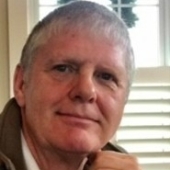About the speaker:
Serial seaweed scientist. Started career with invasive species including Sargassum muticum in Europe. Does anyone even recall S. muticum being an introduced species? Worked in South Africa and Namibia on sub-tropical and temperate seaweeds, particularly phycogeography. Interest in seaweed for plant benefits stimulated in Johannesburg. Became experienced in harvesting and cultivation and the industrial processing of seaweed biomass for alginates and carrageenans at Degussa Texturants, Baupte, France. Developed a passion for eucheumatoids (Kappaphycus and Eucheuma spp.) and cultivation of tropical seaweeds generally. Side-stepped into temperate seaweeds in Canada for food, feed and biostimulants. Now Research Associate at the Verschuren Centre which gives him the opportunity to consult and indulge his phyconomic interests. Publications at: https://orcid.org/0000-0003-1704-458X-1704
Company info:

The Verschuren Centre, Nova Scotia, Canada is committed to providing a collaborative space that enables clients to advance technology cost-effectively, while having the support required on the path to commercialization. The VC’s highly qualified teams have the scientific expertise and the engineering knowhow to meet the specific needs for each client, ultimately increasing their speed to market. The centre has large-scale piloting capacity, highly specialized analytics and product testing labs which provide clients with a capital-efficient solution, bridging their path towards commercialization. The collaborative nature and network of partners nationally and globally connects the VC’s clients within a supportive environment that is unparalleled.
Presentation:
Seaweeds, like all primary producers, require macronutrients (C, N, P) for the synthesis of organic molecules through photosynthesis to support growth and accumulation of storage compounds, including cell wall polysaccharides, for example, agars, carrageenans, and alginates, that have numerous industrial applications. The commercial production of tropical eucheumatoids has been reliant on natural streams of inorganic nutrients. Recently, the prevalent use of inorganic fertilizer in seaweed farming in the southern Philippines was allegedly initiated to boost seaweed health and avert crop failure due to pests and diseases; however, it may also be economically driven to increase biomass production with a shorter crop period that is vital for the livelihood of the marginalized coastal inhabitants. Consequently, the harvest of fast-growing but immature crops whose tissues are replete with nutrients could compromise the carrageenan yield and rheology, and, more importantly, its organic status. Moreover, the indiscriminate use and disposal of inorganic fertilizer in algoculture pose the potential for ecological disaster.



